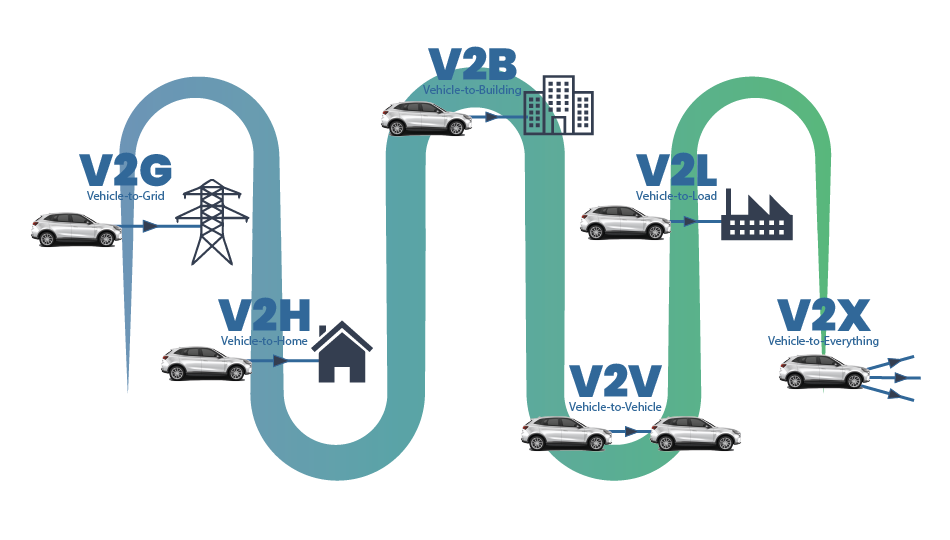V2X Energy Transfer
Vehicle-to-Everything (V2X) energy transfer enables for electric vehicles to interact with energy grids, homes, other vehicles, and infrastructure to facilitate energy exchange. This technology allows electric vehicles not only to consume energy but also to function as energy providers and storage units.
In addition to advancements required for integrating energy transfer from electric vehicle batteries, the development of the V2X system itself is crucial. A V2X system consists of three fundamental components: power connection to transfer energy, a system managing the charging and discharging of electric vehicles, and control over the service at the energy transfer destination.
V2X Communication Types
V2G (Vehicle to Grid): It enables electric vehicles to engage in energy transactions with the grid, utilizing their batteries as energy storage units. For instance, energy stored in your electric vehicle's battery while charging can be transferred to the grid to power electrical devices in your home. V2G devices are essential for safely managing power conversion between the vehicle and the grid. It also;
* Balances the load on the electricity grid during peak demand periods.
* Facilitates storage of excess energy and its redistribution to the grid when needed.
* Provides users the opportunity to sell energy back to the grid during high-demand, high-price periods.
* Helps reduce dependence on fossil fuel power plants, thereby lowering carbon footprints.
V2V (Vehicle to Vehicle): It allows vehicles to communicate directly and share data, facilitating safer driving experiences and enabling energy transfer between vehicles when needed.
V2H (Vehicle to Home): It transfers energy from electric vehicle batteries to homes, serving as a mobile energy storage solution. This technology can act as a backup power source for homes during power outages or times of high energy costs.
V2L (Vehicle to Load): It directly transfers energy from electric vehicle batteries to external devices and loads, allowing vehicles to power various devices or provide backup energy.
V2B (Vehicle to Building): It helps buildings meet electricity by utilizing energy stored in electric vehicle batteries.
Advantages of V2H, V2L, V2B:
* They act as a portable energy source in locations such as campsites, concert venues, events, and construction sites.
* They provide energy without the need for fossil fuel generators during emergencies, promoting fuel savings.
* They meet energy demands during power outages.
* They save on energy costs by using energy stored in vehicle batteries during peak pricing periods.
* They enable electric vehicles to be charged from renewable energy sources like solar power for later use.
* They contribute to diversifying existing energy sources.
